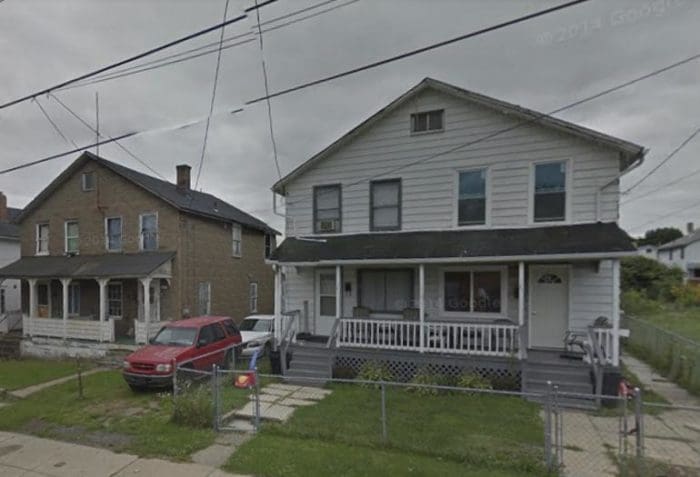At about 1 a.m. last Wednesday, Brionna Hicks, of Aliquippa, Pennsylvania, stepped outside on the porch of her home to smoke a cigarette. Her mother was upstairs with three children. Her brother, Anthony Farley, lived in the other half of the duplex.
Two men, wearing shirts with DEA printed on them, ran up to the porch yelling, “DEA!” and tried to handcuff Hicks. She fought them and started screaming.
From post-gazzette.com, 18 July:
Her mother came downstairs and was confronted by a tall man wearing something white on his head, according to the complaint. The man pointed a gun at the mother and told her to lay face down on the stairs.
The two men then tried to drag Ms. Hicks out of the house, she said, at which point her brother, who lives in the adjoining half of the duplex, came to the front door.
The unidentified man shot her brother, Anthony Farley, in the neck.
Mr. Farley returned fire, striking the man, according to the complaint.
While Hicks’s was wounded, he will recover. One of his assailants ended up dead, on the porch. The second attacker escaped.
This incident illustrates a growing problem of criminals impersonating law enforcement officers to gain an advantage over their victims. It was less of a problem when most police officers were uniformed, used official vehicles and fewer “no-knock” raids were made.
One of the primary purposes of a warrant is to inform the person in charge of a search and that officers are doing so under due process. A search warrant protects both the owner of the premises and the police. Proper service of a search warrant also prevents searches of other premises or places not authorized in the warrant.
An owner of premises does not have to allow police onto the premises without a warrant.
The war on drugs has vastly expanded the use of no-knock warrants, which have been issued promiscuously in recent years. The mere ownership of legal firearms is frequently used as a premise to issue a no-knock warrant.
It has become much harder for citizens to know if the people breaking down their door are police or criminals. If the police don’t announce themselves and burst in, how is a person to know if the invasion of their home is occurring under the rule of law?
I was involved in a situation in Australia where a premises was searched. The officers with the warrant were not even present. A resident asked to see the paperwork, but it couldn’t be produced. The resident then refused them entry. The officers waited until the paperwork arrived. They were then allowed entry, and conducted their search. That’s the way most searches should work in the United States.
U.S. courts have ruled that some warrants need not to be present for the person to be served and the search conducted. How is person in that situation to know if the officials have a valid warrant if they can’t see the document? They don’t.
Police officers have been killed when they have attempted to serve warrants without sufficient notice. In some of those situations, homeowners who have shot police officers have been found not guilty by juries.
Criminals who disguise themselves as police or other law enforcement are another reason use of no-knock warrants should be severely limited, and sufficient time given to occupants to respond to an announcement by police.
©2018 by Dean Weingarten: Permission to share is granted when this notice and link are included.
